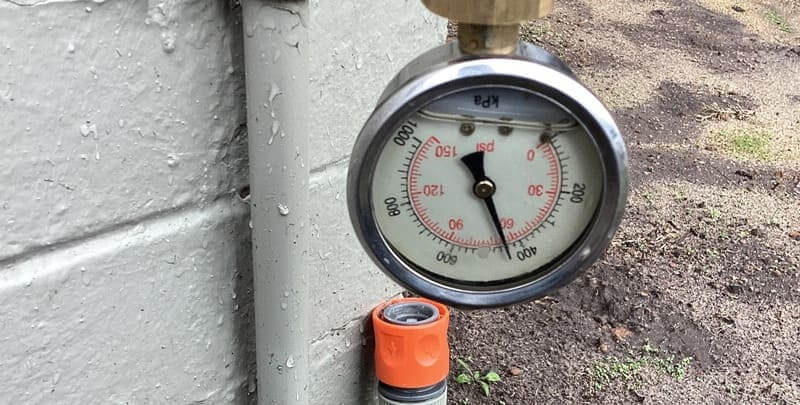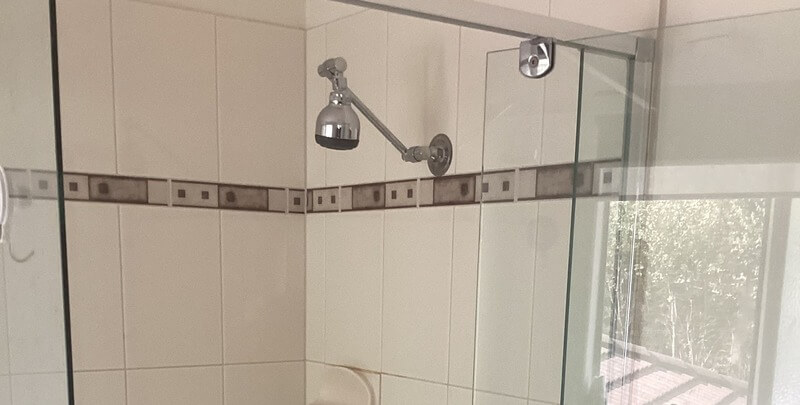
No Water Pressure with Dan
Hi there, it's Dan here. Water pressure is one of those things you don't think about until you don't have it.
A shower without decent water pressure is not worth having. It hardly rinses off the soap. And no one wants the cistern to take 10 minutes to fill up again.
You might be dealing with faulty fixtures or a burst pipe. In such cases, most plumbing systems will suffer and it will cause low water flow.
Let’s take a look at the causes of low water pressure and what can be done about it.
Understanding the Causes of Low Water Pressure
Have you ever turned on the tap or stepped into the shower, only to be greeted by a feeble trickle of water? Low water pressure can be frustrating and disrupt your daily routines. To effectively cope with this issue, it’s important to understand its causes.
Low water pressure in residential areas can stem from various reasons. Clogged or damaged water pipes, water leaks, and faulty pressure regulators are common culprits. These problems can restrict the flow of water and lead to reduced pressure in your taps and showers.
In a municipal water supply, factors like high demand and insufficient infrastructure can contribute to low water pressure. Water main breaks or repairs, as well as seasonal variations, can also affect the pressure you receive at home.
By identifying the causes of low water pressure, from corroded pipes to a failing pressure regulator, you can take the necessary steps to address the issue. In the next section, we’ll explore how to assess the severity of the plumbing system problem and determine if professional assistance is required.
Assessing the Severity of Low Water Pressure
When faced with low water pressure – or even no water pressure – it’s essential to gauge the severity of the issue before taking any action. Understanding the extent of the problem will help you determine the most appropriate steps to cope with it.
Start by identifying the signs of low water pressure in your home. Are multiple fixtures affected, or is it limited to a specific area? Is the decrease in pressure consistent or intermittent? If the flow drops significantly for one particular tap, you can concentrate on that area. These observations can provide valuable insights into the underlying cause.
Consider using a pressure gauge to measure the water pressure at various outlets in your home. Most hardware stores carry pressure gauges that can be easily attached to a tap. Compare the readings to the normal range for your area, typically between 40 and 60 pounds per square inch (psi).
If you find that the pressure is significantly lower than expected, or if the issue persists despite your efforts to address it, it may be time to seek professional assistance.
A technician from Plumber Near Me will have the expertise to diagnose the problem accurately and recommend suitable solutions. Don’t hesitate to reach out to a local plumber for help if needed.

Strategies to Improve Water Pressure
Dealing with low pressure can be frustrating, but there are several strategies you can try to improve the situation. Let’s explore some effective ways to boost your water pressure.
Start with simple fixes that you can tackle yourself. Check for any leaks in your plumbing system and repair them promptly. Leaks can cause a significant drop in water pressure.
Additionally, mineral deposits can accumulate in taps and showerheads, restricting the flow. Clear these deposits by soaking the affected parts in vinegar or using a descaling solution.
Adjusting pressure regulators or valves can also make a difference. These devices control the water pressure in your home and may need calibration. Consult your user manual or seek professional advice on how to make the adjustments.
For more advanced solutions, consult a plumber. Old or damaged water pipes may need to be replaced to restore proper water flow.
Consider upgrading your pressure boosting system, such as installing a pressure booster pump, to enhance water pressure throughout your home.
Remember, improving water pressure requires a tailored approach based on the specific issues in your plumbing system. Don’t hesitate to seek professional help from Plumber Near Me if your efforts fail to restore your water flow.
Water Conservation Tips
While coping with low water pressure, it’s important to also consider water conservation to make the most of the available supply. Here are some tips to help you manage water pressure while conserving water:
- Install low-flow fixtures and appliances: Replace old showerheads and taps with low-flow alternatives. These fixtures are designed to maintain satisfactory water pressure while reducing water consumption.
- Conserve water during daily activities: Be mindful of your water usage. Turn off the tap when not in use, and take shorter showers. Use a basin for dishwashing to minimise water wastage. Small adjustments in your habits can make a significant difference.
- Explore alternative water sources: Consider rainwater harvesting systems for non-potable uses like gardening or cleaning. Using alternative water sources for certain tasks can alleviate the demand on your main water supply.
By implementing these water conservation practices, you can effectively manage low water pressure while minimising water wastage. Remember, every drop counts.
How to Cope with Low Water Pressure
Low water pressure doesn’t have to disrupt your daily activities. With some coping strategies, you can minimise its impact and adapt to the situation. Here’s how:
- Showering and bathing: Choose a showerhead with adjustable spray settings, such as a massage or jet spray. These settings can provide a more satisfying shower experience even with reduced water pressure. Alternatively, try taking shorter showers to conserve water while still feeling refreshed, which takes the strain off your hot water system.
- Washing dishes and doing laundry: Use dishwashing and laundry machines during off-peak hours when water demand is lower. This can help ensure better water pressure during these tasks. Consider using the appropriate cycle or settings for better efficiency.
- Gardening and outdoor water usage: Use watering cans or drip irrigation systems instead of relying on sprinklers. These methods deliver water directly to the plants, reducing the need for high water pressure if your garden tap is struggling.
Remember, adapting to low water pressure requires some adjustments in your routines, whether you’re using cold or hot water.
By implementing these coping strategies, you can maintain functionality and efficiency in your daily activities, despite the strain on your property’s plumbing. Whether you’ve got galvanised steel pipes or copper pipes, these strategies can help.

Additional Considerations and Precautions
When you’re experiencing low water pressure, it’s important to keep a few additional considerations and precautions in mind:
- Ensuring safety and hygiene: While coping with low water pressure, it’s crucial to maintain proper hygiene practices. Use antibacterial wipes or hand sanitizers when necessary. Pay extra attention to cleanliness, especially when cooking or handling food.
- Monitoring water pressure: Keep an eye on the water pressure regularly to identify any sudden changes or worsening conditions. If the pressure continues to decrease or becomes extremely low, it may indicate a more significant issue. In such cases, it’s advisable to seek professional help from local plumbers.
- Understanding local regulations or restrictions: Be aware of any local water regulations or restrictions that may be in place. Some areas might have specific guidelines for water usage during low-pressure situations. Stay informed and follow any recommendations provided by local authorities.
By being proactive and taking these considerations into account, you can cope more effectively with low water pressure while ensuring the safety and well-being of yourself and your household.
Finance Options** for a Water Pressure Solution
When the water pressure gauge is reading low and you’ve got multiple plumbing fixtures just dribbling out water, you need an immediate solution. However, it might be a bad time for your household finances, forcing you to put your water pressure issue on the backburner.
But there’s no need to delay maintenance work on leaking pipes. Plumber Near Me offers a range of finance options** for eligible customers. Your qualified plumber can take you through the easy application process on site and approval usually only takes a few minutes.
Then you’ll have the convenience of making weekly, fortnightly or monthly instalments, depending on the plan you choose from one of our finance providers (Zip or HummLoan).
We also accept payment by cash, cheque, direct transfer and credit card (Visa, Mastercard or American Express). Then you can expect professional service from Plumber Near Me.
Please note: This information is provided for advice purposes only. Regulations differ from state to state, so please consult your local authorities or an industry professional before proceeding with any work. See our Terms & Conditions here.